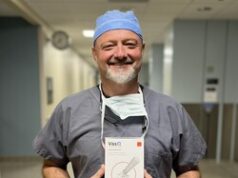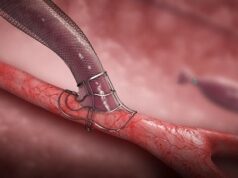
A recent study concludes that arterial diameter may influence arteriovenous fistula (AVF) aneurysm progression and the interval to surgical revision. “Patients with larger arterial diameters should be monitored closely and referred early after aneurysm development,” authors Alexis M Cahalane (Massachusetts General Hospital, Boston, USA) and colleagues write in an online article in The Journal of Vascular Access (JVA).
Another key finding from the study was that radiocephalic AVFs are more resistant to aneurysm development, and “should be considered the first access option for ESRD [end stage renal disease] patients, especially younger patients,” the authors communicate.
This study included all patients who underwent fistula surgical revisions due to aneurysms between 1 January 2014 and 30 July 2016. From this data pool, the investigators collected patients’ demographics and AVF dimensions based on fistulograms. They identified a control group with non-aneurysmal AVFs who had undergone serial fistulograms between 2013 and 2016.
In this retrospective study, Cahalane and colleagues identified 45 eligible patients in the AVF aneurysm group and 24 in the control group, with the mean age of AVF creation being older in the control group (61.8 vs. 53 years, p=0.03).
Writing in JVA, they report that the mean interval between AVF creation and first fistulogram in the study group was 1,464±282 days, compared to an interval of 263±101 days in the control group (p=0.003). Cahalane et al added that the arterial diameter on first fistulogram (r=0.6, p=0.03) predicted maximum aneurysm diameter on the last fistulogram (r=0.6,p=0.03) as well as the interval between first fistulogram and surgical revision (r=-0.33, p=0.03).
In the discussion of their findings, the authors list some limitations of the present study. They note, for example, that the study group contains only a small number of patients with heterogeneous distribution of AVFs in terms of laterality and location. They explain the reasons behind this: “The overall five-year survival rate for ESRD patients receiving haemodialysis was recently found to be 42%, and aneurysms are a late complication of access, with the average follow-up in our study being 1,324 days. Thus, a small number of patients met the study criteria.”













